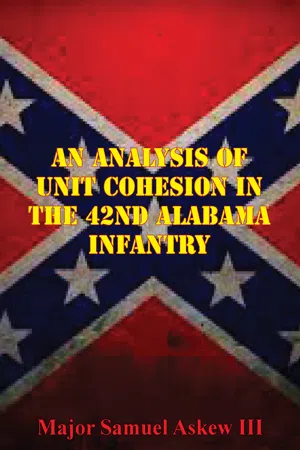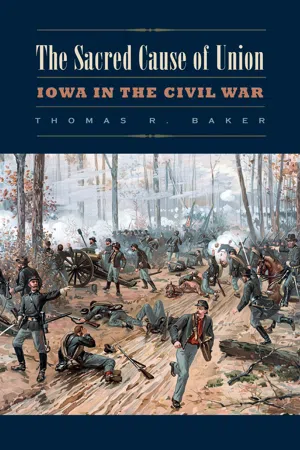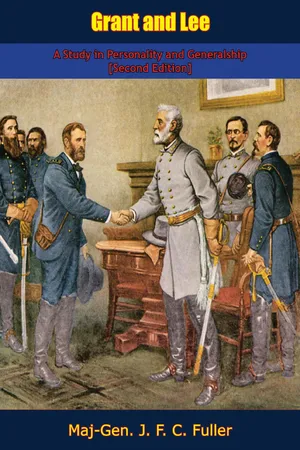History
Battle of Vicksburg
The Battle of Vicksburg was a significant military campaign during the American Civil War, taking place from May 18 to July 4, 1863. Union forces, led by General Ulysses S. Grant, besieged the Confederate stronghold of Vicksburg, Mississippi. The Union's victory at Vicksburg gave them control of the Mississippi River and was a turning point in the war.
Written by Perlego with AI-assistance
Related key terms
1 of 5
11 Key excerpts on "Battle of Vicksburg"
- Dr. Christopher Gabel(Author)
- 2015(Publication Date)
- Golden Springs Publishing(Publisher)
The Vicksburg Campaign — November 1862–July 1863
Strategic Setting
The campaign for the control of Vicksburg was one of the most important contests in determining the outcome of the Civil War. As President Abraham Lincoln observed, “Vicksburg is the key. The war can never be brought to a close until that key is in our pocket.” The struggle for Vicksburg lasted more than a year, and when it was over, the outcome of the Civil War appeared more certain.The centerpiece of the Vicksburg campaign was the Mississippi River, just as the great river is the centerpiece of the North American continent. The Mississippi and its tributaries drain over a million square miles of territory in the United States and Canada. These waterways included twenty thousand miles of navigable water, extending from Montana to Pennsylvania and from Minnesota to the Gulf of Mexico, making possible the large scale settlement of the west. Between 1810 and 1860, the number of whites residing west of the Appalachians swelled from one million to fifteen million, thanks in large part to the availability of navigable waterways. The black population, mostly slaves, grew from two hundred thousand to over two million, concentrated along the Mississippi. The rivers of the Mississippi basin provided an economic outlet for corn and hogs raised in Iowa and Ohio, as well as the sugar and cotton grown on the great plantations of Louisiana and Mississippi. By 1860, railroads were beginning to penetrate the region, but access to these western rivers remained vital to the economy of both the Midwest and the Deep South.When the Civil War started, the Mississippi and its tributaries proved highly important to the conduct of military operations west of the Appalachians. Typically, armies view rivers as obstacles. In the western theater of war, however, the rivers were highways that carried troops, supplies, and firepower. The same steam powered riverboats that sustained the civilian economy made it possible to mount military campaigns that the bad roads and sparse railroads of the region could never have supported. Riverboats ranged in capacity from 250 to 1,700 tons. (A typical railroad train of the period might carry 150 tons, and a horse drawn wagon could move only 1 or 2 tons of cargo.) A riverboat of 500 tons could sustain a typical field army for two days. One Mississippi riverboat could move a regiment of infantry; ten boats could transport an entire division. In addition, riverboats could deliver staggering amounts of firepower. The portion of the Union Navy’s gunboat fleet supporting the Vicksburg operation typically carried some 200 large caliber cannon. In comparison, the Union army conducted much of the campaign with 180 pieces of smaller caliber field artillery.- eBook - ePub
The Campaigns for Vicksburg 1862-63
Leadership Lessons
- Kevin Dougherty(Author)
- 2020(Publication Date)
- Casemate(Publisher)
Logan’s ideas on officer education eventually manifested themselves in the National Defense Act of 1916, which created the Reserve Officer Training Corps (ROTC) program. Amid this mix of background, organization, resources, and personal and systematic strengths and weaknesses, the stage was set for the Vicksburg Campaign, considered by many historians to be the Civil War’s decisive action. The Federal victory at Vicksburg was not a foregone conclusion. The two armies were relatively equal in size, with the Confederates enjoying considerable advantages associated with the defense, the terrain, and a friendly population. In many ways, the campaign’s outcome was as much as anything the product of superior Federal leadership. Vicksburg Campaign Overview T HE M ISSISSIPPI R IVER DOMINATED THE W ESTERN T HEATER OF THE Civil War. Not only was the river the main north-south artery in the interior of the United States, it also divided the Confederacy into two halves. Northern farmers in places like Illinois and Wisconsin had long relied on the Mississippi to get their goods to market. In fact, at the time of the Civil War, the Mississippi River was the single most important economic feature of the North American continent. With the outbreak of hostilities, Confederate forces closed the river to navigation, which threatened to strangle northern commercial interests. For the Confederacy, the agricultural produce of the relatively peaceful trans-Mississippi Confederacy was making a substantial contribution to the Confederate armies in Virginia and Tennessee - eBook - PDF
Voices of the American Civil War
Stories of Men, Women, and Children Who Lived Through the War Between the States
- Kendall Haven(Author)
- 2002(Publication Date)
- Libraries Unlimited(Publisher)
The fall of Vicksburg was truly the straw that broke the Confederacy's back. Coming on the same day as the defeat at Gettysburg, it made July 3,1863, the bleakest of all imaginable days for the South. Ironically, Confederate General Johnston had finally decided to come to the relief of Vicksburg. He had issued orders for his 40,000-man force to move west and attack Grant's army on July 7. On July 4, with his army already in motion toward the attack, he had to cancel the order. Follow-up Questions and Activities 1. What Do You Know? • Why was the city of Vicksburg important to the South? To the North? • Why did the Union gunboats shell the town? Why not just shell the gun em- placements on the bluffs overlooking the river? • Why couldn't the citizens of Vicksburg get any food? • What is a siege? Why would an army lay siege to a town instead of attacking its defenses? • Why did the women of Vicksburg want to care for the wounded and sick even though it meant risking their own lives? Find Out More. Following are four important topics from this story for students to research in the library and on the Internet. The reference sources at the back of this book will help them get started. • Many people have written about their experiences while being trapped in Vicksburg in the early summer of 1863. Find other accounts and compare them to Lucy McRae's. • The two commanding generals at Vicksburg were Generals Pemberton (Con- federate) and Grant (Union). Research the lives, careers, and accomplish- ments of these two leaders. • Research the Mississippi River in the 1860s. What was it used for? By whom? How much cargo traveled up and down this waterway? What alternatives ex- isted? In how many places could a large shipment cross the river? • Compare the experience of Vicksburg to those of other besieged cities during war. Two famous twentieth-century besieged are the Escorial during the Span- ish civil war in the 1930s and the city of Leningrad during World War II. - eBook - PDF
Civil War America
Voices from the Home Front
- James A. Marten(Author)
- 2003(Publication Date)
- ABC-CLIO(Publisher)
Vicksburg became the chief target for Union forces after the fall of New Orleans in April 1862 and of Memphis two months later. A flotilla of riverboats appeared below the city in May 1862; after Confederates refused to surrender, the Yankees staged a halfhearted attempt to shell the city into submission but retreated back to New Orleans late in the summer. “ ‘How do you live here?’ ‘Sir, we die.’ ” Even as the Federals pulled back, the defenders got busy building fortifications; eventually an army of 30,000 men with over 170 cannon would protect the city. Late in 1862, two separate land forces under Grant and General William T. Sherman approached the city, but Confederate raiders cut Grant’s supply line and Sherman’s men were badly defeated at Chickasaw Bayou northeast of Vicksburg. The following spring, Grant marched his army down the west bank of the river, and Union gunboats forced their way past the Vicksburg batteries. The land and riverbased forces met below Vicksburg, where Grant crossed the river on May 1, marched inland to Jackson, defeated several small Confederate forces, and bottled up Vicksburg from the east. By May 19, the Union army was on the outskirts of the city, and although two frontal attacks against the Confederate defenses failed, they would sustain a short, tight siege that would sap the energy and will of the defenders and of the civilians trapped among the bluffs and streets of the sprawling city. The battles for Vicksburg were a nightmare for everyone involved. The frequent skirmishing, punctuated by major assaults and the occasional explosion of huge mines placed in tunnels that were dug under Confederate lines by Union soldiers; the stench of rotting flesh—of horses and humans alike—broiling in the Mississippi heat; and the nearly constant shelling of the city created nearly unbearable conditions. - eBook - ePub
Triumph & Defeat
The Vicksburg Campaign
- Terrence J. Winschel(Author)
- 2022(Publication Date)
- Savas Beatie(Publisher)
HAPTER NINECrucial to the Outcome: Vicksburg and the Trans-Mississippi Supply Line
Church bells rang in joyous chorus throughout the North as news of the fall of Vicksburg spread as an electric shock across the nation and, in towns large and small, bells in county courthouses and city halls joined in glorious refrain. In the states of the Old Northwest, the farmers of which region depended on unfettered navigation of the Mississippi River to send their crops to world markets, the news of Vicksburg’s surrender was especially well received. The success of Union arms was hailed in banner headlines from St. Louis to Cincinnati, Des Moines to Indianapolis, and Chicago to St. Paul. The victory was all the more dear to the citizens of that region for it was primarily soldiers from their states who had shed their blood on battlefields from Ft. Donelson to Shiloh, Chickasaw Bayou to Arkansas Post, and from Port Gibson to Champion Hill who had triumphed at Vicksburg.To place Vicksburg and the campaign for control of the Mississippi River in proper perspective, modern students of the Civil War must understand the significance of the city and the river to the war efforts of the North and South—a significance that was clearly understood and fully grasped by Union and Confederate leaders once hostilities began. Yet, an article in North & South magazine (Volume 6, Number 7) mocked the significance of Vicksburg and the Mississippi River as “myths by authors obviously oblivious to its realities.”1This essay will examine the significance of the Mississippi River, of Vicksburg in particular, and the vast Trans-Mississippi region, and allow you to determine if its importance to the Confederacy is myth or reality.Shortly after the outbreak of the Civil War, President Abraham Lincoln had gathered his civil and military leaders to discuss strategy for opening the Mississippi River and ending what he termed a rebellion in the Southern states. Seated around a large table examining a map of the nation, Lincoln made a sweeping gesture with his hand then placed his finger on the map at Vicksburg and said, “See what a lot of land these fellows control of which Vicksburg is the key.…The war can never be brought to a close until that key is in our pocket.”2 - eBook - ePub
- Leander Stillwell(Author)
- 2015(Publication Date)
- Golden Springs Publishing(Publisher)
CHAPTER X. — THE SIEGE OF VICKSBURG. JUNE AND JULY, 1863.
General Grant closed up against Vicksburg on May 19, and on that day assaulted the Confederate defenses of the place, but without success. On the 22nd a more extensive assault was made, but it also failed, and it was then evident to Grant that Vicksburg would have to be taken by a siege. To do this he would need strong reinforcements, and they were forthwith sent him from various quarters. So it came to pass that we went also. On May 31st we climbed on the cars, headed for Memphis, and steamed away from old Bolivar—and I have never seen the place since. For my part, I was glad to leave. We had been outside of the main track of the war for several months, guarding an old railroad, while the bulk of the western army had been actively engaged in the stirring and brilliant campaign against Vicksburg, and we were all becoming more or less restless and dissatisfied. From my standpoint, one of the most mortifying things that can happen to a soldier in time of war is for his regiment to be left somewhere as a “guard,” while his comrades of the main army are in the field of active operations, seeing and doing “big things,” that will live in history. But, as before remarked, the common soldier can only obey orders, and while some form the moving column, others necessarily have stationary duties. But at last the old 61st Illinois was on the wing,—and the Mississippi Central Railroad could “go hang.”The regiment at this time was part of Gen. Nathan Kimball’s division of the 16th Corps, and the entire division left Tennessee to reinforce Grant at Vicksburg. We arrived at Memphis in the afternoon of the same day we left Bolivar, the distance between the two places being only about 72 miles. The regiment bivouacked that night on a sandbar on the water front of Memphis, which said bar extended from the water’s edge back to a high, steep sand-and-clay bank. And that, by the way, is the only night I have ever spent within the limits of the city of Memphis. While we were there on this occasion, I witnessed a pathetic incident, which is yet as fresh and vivid in my memory as if it had happened only yesterday. Soon after our arrival I procured a pass for a few hours, and took a stroll through the city. While thus engaged I met two hospital attendants carrying on a stretcher a wounded Union soldier. They halted as I approached, and rested the stretcher on the sidewalk. An old man was with them, apparently about sixty years old, of small stature and slight frame, and wearing the garb of a civilian. I stopped, and had a brief conversation with one of the stretcher-bearers. He told me that the soldier had been wounded in one of the recent assaults by the Union troops on the defenses of Vicksburg, and, with others of our wounded, had just arrived at Memphis on a hospital boat. That the old gentleman present was the father of the wounded boy, and having learned at his home in some northern State of his son being wounded, had started to Vicksburg to care for him; that the boat on which he was journeying had rounded in at the Memphis wharf next to the above mentioned hospital boat, and that he happened to see his son in the act of being carried ashore, and thereupon at once went to him, and was going with him to a hospital in the city. But the boy was dying, and that was the cause of the halt made by the stretcher-bearers. The soldier was quite young, seemingly not more than eighteen years old. He had an orange, which his father had given him, tightly gripped in his right hand, which was lying across his breast. But, poor boy! it was manifest that that orange would never be tasted by him, as the glaze of death was then gathering on his eyes, and he was in a semi-unconscious condition. And the poor old father was fluttering around the stretcher, in an aimless, distracted manner, wanting to do something to help his boy—but the time had come when nothing could be done. While thus occupied I heard him say in a low, broken voice, “He is—the only boy—I have.” This was on one of the principal streets of the city, and the sidewalks were thronged with people, soldiers and civilians, rushing to and fro on their various errands,—and what was happening at this stretcher excited no attention beyond careless, passing glances. A common soldier was dying,—that was all, nothing but “a leaf in the storm.” But for some reason or other the incident impressed me most sadly and painfully. I didn’t wait for the end, but hurried away,—tried to forget the scene, but couldn’t. - Samuel L. Askew III(Author)
- 2015(Publication Date)
- Golden Springs Publishing(Publisher)
CHAPTER 3 — VICKSBURG IS THE KEY
“See what a lot of land these fellows hold, of which Vicksburg is the key! The war can never be brought to a close until that key is in our pocket. We can take all the northern ports of the Confederacy, and they can defy us from Vicksburg”{78} — Abraham Lincoln, Incidents and Anecdotes of the Civil WarIntroduction
The 42nd Alabama spent October through November 1862 in camp at Lumpkin’s Mill, near Holly Springs, Mississippi assigned to Lieutenant General John C. Pemberton’s Department of Mississippi and East Louisiana. Pemberton’s department was responsible for protecting the remaining Confederate territory and railroad lines in North Mississippi.Central Mississippi Campaign
After the repulse of Van Dorn’s force at Corinth, Grant focused on the capture of Vicksburg and the control of the Mississippi River. He planned to take Vicksburg in a two-pronged attack. Grant would accompany one force through Central Mississippi and Major General William T. Sherman, commanding the second force from Memphis, Tennessee would move by transport ships directly toward Vicksburg. Grant consolidated approximately 31,000 soldiers at Grand Junction, Tennessee and began his movement toward Holly Springs. On 9 November, Pemberton wired Richmond, “I deemed it advisable to withdraw from the indefensible position at Holly Springs.’ The Confederate forces evacuated Holly Springs”{79} in the face of the advancing Federals and took up positions north of Oxford, Mississippi along the Tallahatchie River. Grant outflanked the Confederate positions along the Tallahatchie, forcing Pemberton to withdraw further south.On 2 December, Grant’s force entered Oxford Mississippi skirmishing with the Confederate rearguard and captured thirty four soldiers of the 42nd Alabama at the Confederate Hospital at Oxford. These soldiers suffered from wounds received at Corinth or illness from poor sanitary conditions in camp, six of these soldiers died while in Union custody. Grant eventually paroled and exchanged the remaining soldiers on 9 May 1863.{80} From Oxford, Grant sent his intentions to General Henry C. Halleck, the General in Chief, “Sherman will command the expedition down the Mississippi. He will have a force of about 40,000 men. Will land above Vicksburg up the Yazoo, if practicable, and cut the Mississippi Central Railroad.”{81}- eBook - PDF
The Sacred Cause of Union
Iowa in the Civil War
- Thomas R. Baker(Author)
- 2016(Publication Date)
- University Of Iowa Press(Publisher)
By April, the outer (eastern) wall of fortifications ran for eight miles from north to south. Along the river bluff, the line of Rebel cannon stretched for miles north and south of the port. The final capture of the citadel in July 1863 came about after Grant approached Vicksburg overland from the south, a dangerously risky gam-bit. With the Rebel artillery still in command of the bluffs, the Union troops operating south of Vicksburg had no direct supply line. Once ashore on the east bank of the Mississippi River, the 35,000 soldiers in Grant’s three army corps had to march through hostile territory without regular supplies of food and ammunition. Everything depended upon the ability 1863: triumph in mississippi and arkansas • 173 of the Western soldiers to utilize local resources effectively and survive the heat and humidity. The overland campaign lasted three full weeks before a direct supply line was reestablished. After regular army supplies arrived, six more weeks passed before the citadel surrendered on July 4. During the Vicksburg campaign, one Iowa recruit in the 22nd Infan-try described the sultry conditions as having an “enervating effect.” “The entire system—mental, physical and nervous—is weakened and prostrated to a degree that I never felt, nor even had any idea of before,” the Iowan noted. “This is not the case with me alone, but every one here even the strongest and most [healthy] feel this way to a greater or lesser extent.” By the time Vicksburg finally surrendered, 1,800 Iowa soldiers had died or been discharged for wounds, heat exhaustion, or other disability. 7 Over the three-week period that preceded the siege, Grant’s soldiers covered two hundred miles and fought seven separate battles. All told, twenty-six Hawkeye infantry regiments fought at Vicksburg, fifteen of them newly recruited units. Only Illinois boasted more regiments in this campaign. - eBook - ePub
- Terry G. Scriber(Author)
- 2006(Publication Date)
- Pelican Publishing(Publisher)
The power which baffled the enemy resided in the breasts of the soldiers of seven States, marshaled behind the ramparts at Vicksburg. Mississippians were there, but there were also the men of Kentucky, of Tennessee, of Alabama, of Arkansas, of Louisiana and of Missouri, as ready to defend the emporium of Mississippi as to strike down the foe at their own hearthstones.The story of the legendary Confederate gunboat ended on August 6, when, on a trip to reinforce Breckinridge's division in its attempt to retake Baton Rouge, the ship developed engine trouble and ran aground within sight of the city. Her archenemy, the Essex, upon seeing her plight, began steaming toward her to avenge the earlier embarrassment she had suffered at the hands of the rebel gunboat. The Arkansas was set afire and left to burn and explode in the Mississippi River, her deck having never been touched by the foot of an enemy. In her twenty-three days of existence, she had become a naval legend.The Twenty-seventh Louisiana Infantry, with Vicksburg still firmly in their grasp, had gotten their first taste of warfare and proven themselves to be worthy of the title "soldiers of the Confederacy." The immediate Union threat now gone, the men settled into the routine of picket duty and guard duty inside the city as well as a regimen of constant drill. The Confederate leaders knew it was only a matter of time before the Union would again attempt to capture Vicksburg, and they were determined tohave the city and the garrison ready for their next move. Gen. M. L. Smith immediately put his chief engineer to work constructing a system of defensive works around the city consisting of lunettes, redoubts, redans, and fieldworks that were connected by a series of rifle pits. Smith, a very capable officer, knew that the Union realized by now that Vicksburg could only be taken by a large force of combined army and navy.The month of September saw the sickness in the Twenty-seventh Louisiana begin to subside, and heavy rains were recorded in the city for that month. The military drills continued for the regiment, with two hours set aside in the morning for the individual company drills, followed by a one-hour skirmish drill, and then three hours of battalion drill in the evenings. All of the regimental drills were conducted in an open field under the relentless Mississippi sun. - eBook - PDF
The American Civil War
A Handbook of Literature and Research
- Steven E. Woodworth(Author)
- 1996(Publication Date)
- Greenwood(Publisher)
Military reputations were won and lost on the inland rivers, with the fate of both John- stons, Beauregard, Pemberton, Polk, and even Bragg tied in large measure to performance that embraced those features. Of course, a generation of young men in uniform (military and naval, blue and gray) passed into manhood striving to control those geographical features. Civilians too were swept up in this war. Not only cave life in besieged Vicksburg but experiences on river-bottom plan- tations and in the cities, towns, and smaller farms along their banks tested the mettle of a people all too anxious to resolve the great issues of the day by force of arms. Together, North and South dissipated the flower of their young and the region's treasure in what civilians saw as a struggle to control politically the arteries of commerce and the military viewed as a vehicle for either suppressing rebellion or defending the natural boundaries of a new nation. The Old Northwest and the younger frontier South knew the rivers as prewar highways of trade and communication. Such indispensable avenues in peace were guaranteed a wartime role. To understand the symbiotic relationship, any study of the war on western waters must begin with classic accounts by Louis Hunter, Steamboats on the Western Rivers: An Economic and Technological History (1947), chapter 4 of George Taylor, The Transportation Revolution, 1815-1860 (1951), and Byrd Douglas Steamboatin on the Cumberland (1961). They will ease passage to John Fiske's background The Mississippi Valley in the Civil War, (1900), and, hence, to the military application of the rivers to warfare. Certain generalized assessments are an appropriate introduction to the rela- tionship of the river war to ultimate Union victory and Confederate defeat. See both the often abstruse Herman Hattaway and Archer Jones, How the North Won (1983), and a more felicitous Richard Beringer et al., Why the South Lost (1986), especially chapter 9. - eBook - ePub
Grant and Lee
A Study in Personality and Generalship [Second Edition]
- Maj.-Gen J. F. C. Fuller(Author)
- 2018(Publication Date)
- Papamoa Press(Publisher)
At length, towards the end of March, the waters on the Louisiana bank of the Mississippi began to recede, and Grant determined to move south (see Map. No. 5). Sherman, McPherson, Logan and Wilson offered strong opposition to such an advance, Sherman asserting that the only way to take Vicksburg was to return to Memphis, and from there move down the Mississippi Central railroad. Grant saw that politically if not strategically, this was impossible, consequently he adhered to his plan, and in order to mystify his enemy he moved Sherman’s corps 150 miles north of Vicksburg and sent Colonel Grierson on a raid of 600 miles through Mississippi—from La Grange to Baton Rouge. This force killed 100 and captured 500 Confederates at a cost to itself of three men killed and seven wounded.On the night of April 16 Admiral Porter successfully ran a convoy past the Vicksburg batteries, and, on the 30th , at last, after four months’ wrestling with rain, river and mud, Grant landed his army on the eastern bank of the Mississippi at Bruinsburg. “I felt a degree of relief scarcely ever equalled since,” he writes, “...I was on dry ground on the same side of the river with the enemy. All the campaigns, labors, hardships and exposures from the month of December previous to this time that had been made and endured, were for the accomplishment of this one object.”{450}At 2 a.m., on May 1, McClernand’s corps advanced on Port Gibson, and at that place defeated a Confederate force which, on the 3rd , was driven over the Big Black river; whereupon Grant established his base at Grand Gulf.The problem which now faced him was one of exceptional difficulty. Vicksburg was immensely strong, and it commanded though it did not entirely block his sole line of supply—the Mississippi. His army numbered about 51,000 all told, Pemberton’s {451} some ten thousand less; but as Vicksburg was connected by railroad to the interior this number might rapidly be increased. To attack Vicksburg from the south was out of the question, for the risk of being taken in rear by forces assembled at Jackson was too great. Grant decided, therefore, to strike at the decisive point, the rear of Vicksburg; that is to advance on Jackson, and cut the fortress’s line of supply. To do so and simultaneously maintain his own line of supply with Grand Gulf would have absorbed so large a force, that Grant (having learned his lesson at Holly Springs) decided on one of the boldest steps ever taken in war, namely, to “cut loose from” his “base, destroy the rebel forces in rear of Vicksburg and invest or capture the city.”{452} The audacity of this strategy completely bewildered Pemberton, and it may well bewilder the reader; for on May 2 the disastrous battle of Chancellorsville was begun, and any inkling in Washington of this audacious move would almost certainly have led to its cancellation. As it was, when Halleck learned of the movement he at once ordered Grant to return; but fortunately there was no telegraph line in operation south of Cairo, and Grant was well on his way before this order reached him.{453}
Index pages curate the most relevant extracts from our library of academic textbooks. They’ve been created using an in-house natural language model (NLM), each adding context and meaning to key research topics.
![Book cover image for: The Vicksburg Campaign, November 1862-July 1863 [Illustrated Edition]](https://img.perlego.com/book-covers/3021084/9781782899365_300_450.webp)

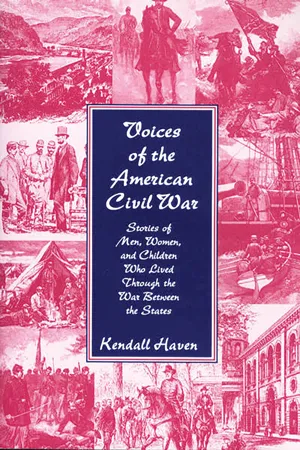
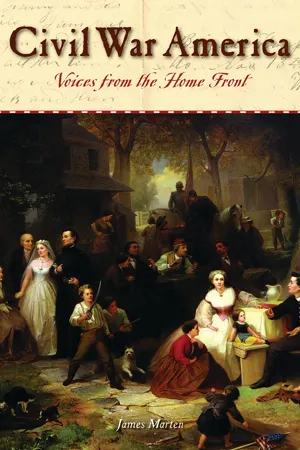
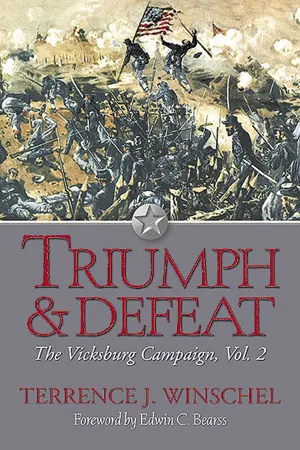
![Book cover image for: The Story Of A Common Soldier Of Army Life In The Civil War, 1861-1865 [Illustrated Edition]](https://img.perlego.com/book-covers/3018743/9781786251183_300_450.webp)
